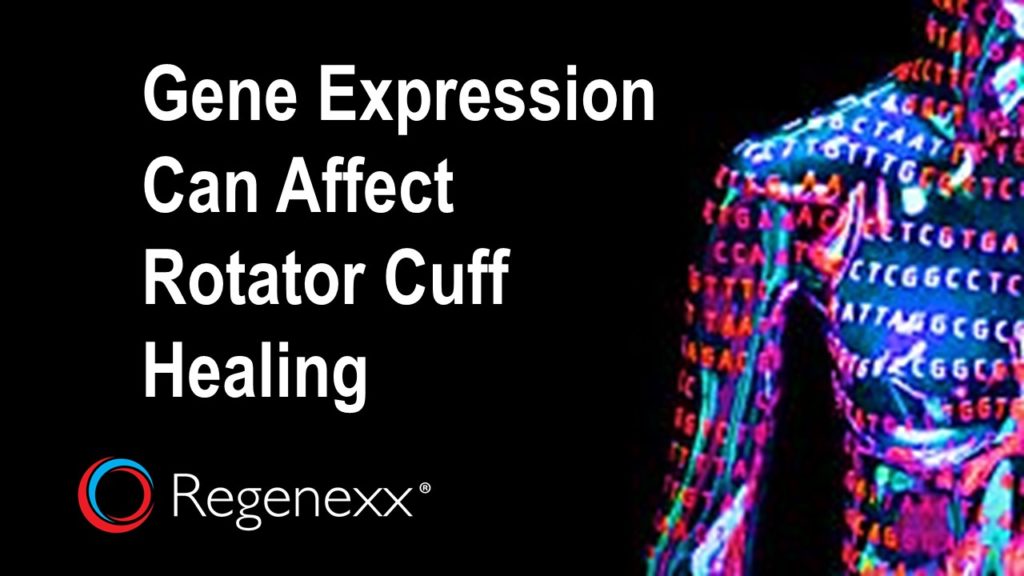Rotator Cuff Healing May Depend On Your Genes

A Primer On What We Know About Rotator Cuff Healing
The rotator cuff is a group of muscles that help to both move and stabilize the main shoulder joint. As we age, one or more of these muscle tendons can be torn just by an innocuous activity—something like reaching overhead for a carry-on in an airplane. We used to think that rotator cuff injuries were like any other tear in any other structure, and just a good sewing job during surgery would do the trick. However, many times, that doesn’t work so well. For example, we know that surgery for big rotator cuff tears will often fail (here’s another study showing that large rotator cuff tear surgery fails more often than not). Why is this happening?
First, we all take for granted that the native stem cell content of any body part is related to its ability to maintain and heal itself—meaning more local stem cells means better healing ability. In rotator cuff tears, fewer stem cells are usually present. In addition, adding stem cells to a surgical rotator cuff repair will improve outcome.
We also know that one of the common treatments given to patients with shoulder rotator cuff tears is a steroid shot to reduce swelling and pain. While this is a potent anti-inflammatory, the steroid also hurts the tendon cells. In addition, we also know that shoulder rotator cuff surgery patients who receive steroid shots have tendon cells that are in poorer health than those patients who never got the shots. In fact, the new research focuses on this same concept—how cells in certain patients are different from those in other patients.
What Is Gene Expression?
You’ve heard that you have genes, which are the instruction set for everything in your body. How those genes are used (i.e., which chapter and verse of the genetic manual that your body reads from) is called gene expression. As an example, you may have a gene that tells your body how to make a certain protein. As your body reads those instructions to make that protein, this is called gene expression.
How Rotator Cuff Healing Depends On Gene Expression
The new study took samples of cells from the torn rotator cuff tendons that had experienced small or large tears and looked at gene expression in these versus normal tendon cells. Interestingly, the cells from rotator cuff tear patients were in the process of using their genes to make proteins that broke down tissue (matrix metalloproteinases). They were also specifically not using their genes to make new tendon. In addition, the cells from the tears showed a lessened ability to call for new cells to help repair (lessened chemotaxis).
The upshot? The reason why so many surgical repairs fail is that the tendon cells that are supposed to help heal the tear can’t do what they need to. Sometimes that’s because a physician, who hasn’t gotten the memo that steroid shots are bad news, poisons the cells by injecting this nasty anti-inflammatory. Sometimes it’s because the local area doesn’t have enough normal stem cells to help healing, or those have, again, been poisoned by a steroid shot.

NOTE: This blog post provides general information to help the reader better understand regenerative medicine, musculoskeletal health, and related subjects. All content provided in this blog, website, or any linked materials, including text, graphics, images, patient profiles, outcomes, and information, are not intended and should not be considered or used as a substitute for medical advice, diagnosis, or treatment. Please always consult with a professional and certified healthcare provider to discuss if a treatment is right for you.
